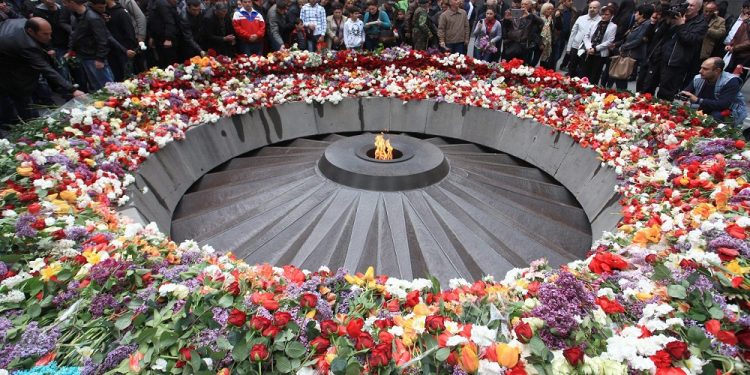
Genocide Remembrance Day
Observed in Armenia and the Republic of Artsakh, as well as among the Armenian diaspora, Genocide Remembrance Day is a holiday that commemorates the victims of the 1915 Armenian Genocide. This was a series of systematic starvation and massacres of over 1.5 million Armenians by the Ottomans. This holiday has been observed since 1919 and commemorates the deportation of Armenian intellectuals on April 24, 1915—an event that marked the beginning of the Armenian Genocide.
The History of Genocide Remembrance Day
In 1915, Armenian Genocide survivors observed the first commemoration of this day on April 24, 1919. This day commemorated the deportation of Armenian intellectuals from Constantinople (now known as Istanbul) in 1915. This event is seen as the beginning of the Armenian Genocide. It has been observed by Armenians ever since but didn’t become an official holiday in Armenia until 1988.
Armenia had been part of the Ottoman Empire since the 15th century, and the Armenian community flourished throughout the Empire by the time that the area that would become Armenia came under Russian rule during the 19th century.
When WWI started, the Ottomans entered the war on the side of the Germans in 1914. Religious authorities declared a holy war against what they perceived to be all enemy Christians—which placed Christian Armenians squarely in the crosshairs. This led to the deportation of Armenian intellectuals from Constantinople and then the persecution and killing of Armenians. It’s estimated that by the time the persecutions ended, a population of approximately 2 million Armenians had been reduced to a population of under 400,000 Armenians.
In 1975, the United States 94th Congress approved House Joint Resolution 148 to designate April 24th as National Day of Remembrance of Man’s Inhumanity to Man. The date for this day was specifically chosen to honor those of Armenian ancestry who succumbed to the genocide beginning in 1915. Unfortunately, the resolution failed to pass in the United States Senate Judiciary Committee. In 1988, the holiday was formally adopted by Soviet Armenia as a public day of commemoration.
Facts About Armenia
Below is a collection of some of the facts that we’ve learned during the course of our research on Genocide Remembrance Day. Let’s take a quick look at them before we move on to how this holiday is observed in Armenia and among the Armenian diaspora.
- Armenia was first mentioned in 520 BC in a manuscript by King Darius of Behistun.
- Armenia was the first country to adopt Christianity as its state religion.
- The Mother See of Holy Etchmiadzin in Vagharshapat, Armenia, was built in 301 A.D.
- Armenia has its own alphabet.
- Yerevan, the Armenian capital, was founded in 782 B.C. by King Argishti.
- Armenia has the world’s longest non-stop double-track cable car.
Observing Genocide Remembrance Day
This day is observed with somber services all over the world. Every year, hundreds of thousands of people walk to the Tsitsernakaberd Genocide Memorial in Armenia to attend services and to lay flowers at the eternal flame. Construction on this memorial began after the Yerevan Demonstrations in 1965.








